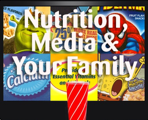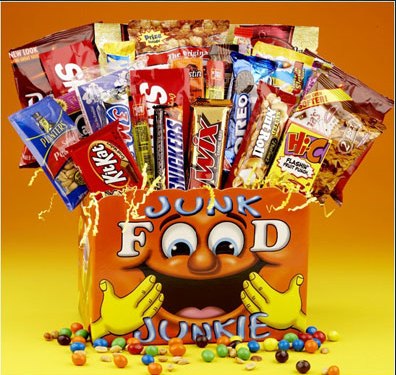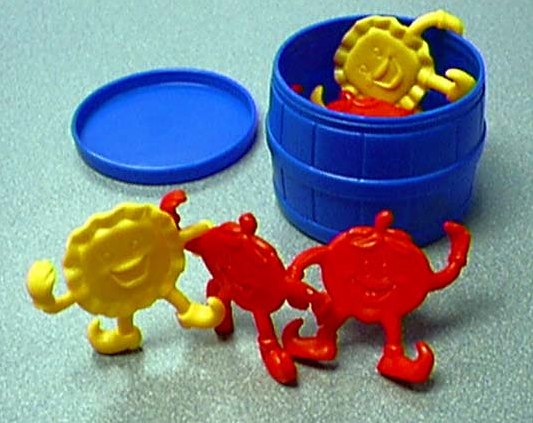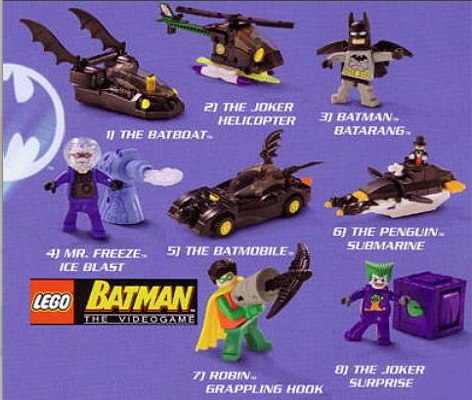




Pester Power
Laurie Siegel, a marketing expert with
JustKid Inc. has been quoted as saying:
“I can’t think of one successful food product that has been targeted to moms. Who is the advocate for the product in the home? The party line is that it should be the kid". (Shor, Born to Buy, 2005)
Kids Train Their Parents
Most parents well know that there is little point in spending time and wasting money on items that kids won’t use. Marketers exploit this by subtly encouraging kids to train their parents, all without their parent’s knowledge.
Kids in focus groups report that they have already trained their parents to buy previously requested items so they are now able to use their requests for new products. (Shor, Born to Buy, 2005)
Particularly as kids get older, Shor tells us, moms consult with the kids to find out what they will eat; they may even allow them to take over control of purchasing the foods they want.
Over time, moms and dads learn what kids will eat and these are the things they will buy, saving them time and money.
For more information and a book preview of Juliet Shor’s Born to Buy, see HERE

“I can’t think of one successful food product that has been targeted to moms. Who is the advocate for the product in the home? The party line is that it should be the kid". (Shor, Born to Buy, 2005)
Kids Train Their Parents
Most parents well know that there is little point in spending time and wasting money on items that kids won’t use. Marketers exploit this by subtly encouraging kids to train their parents, all without their parent’s knowledge.
Kids in focus groups report that they have already trained their parents to buy previously requested items so they are now able to use their requests for new products. (Shor, Born to Buy, 2005)
Particularly as kids get older, Shor tells us, moms consult with the kids to find out what they will eat; they may even allow them to take over control of purchasing the foods they want.
Over time, moms and dads learn what kids will eat and these are the things they will buy, saving them time and money.
For more information and a book preview of Juliet Shor’s Born to Buy, see HERE

Nag Factor Study
The Science of Nagging
Based on a highly publicized study (Idell, 1978) the marketing industry has had an important tool in its arsenal of strategies to try to reach parents. The industry still devotes tremendous time and energy figuring out how the nagging process works and how it can work to their advantage.
Parents are receptive to Nagging
Idell’s study (1978) found that 70% of the parents were receptive to their children’s requests.
A third of these parents were what Idell called “indulgers” in that they didn’t mind their children’s requests for nonessentials.
15% were what were termed “kid pals” in that they were child-like themselves and allowed their children significant impact on selecting a product.
20% are those who were called the “conflicteds,” these parents disliked advertising targeting children, they didn’t like their child’s requests for nonessentials yet they found these requests hard to resist.
13% were unaffected by the nagging; this was what was called the “bare necessities;” this group according Idell considered their purchases carefully.
Idell further found that sales for items purchased by kids fell by 1/3 if the kids didn’t ask for them. There were even larger declines reported for certain items like toys and entertainment.
During a typical trip to the grocery store, a child will make about 15 requests according to some nag factor studies. In addition they make about 5 requests a day at home and 10 requests a day on vacation---in all about 3,000 requests a year!

Based on a highly publicized study (Idell, 1978) the marketing industry has had an important tool in its arsenal of strategies to try to reach parents. The industry still devotes tremendous time and energy figuring out how the nagging process works and how it can work to their advantage.
Parents are receptive to Nagging
Idell’s study (1978) found that 70% of the parents were receptive to their children’s requests.
A third of these parents were what Idell called “indulgers” in that they didn’t mind their children’s requests for nonessentials.
15% were what were termed “kid pals” in that they were child-like themselves and allowed their children significant impact on selecting a product.
20% are those who were called the “conflicteds,” these parents disliked advertising targeting children, they didn’t like their child’s requests for nonessentials yet they found these requests hard to resist.
13% were unaffected by the nagging; this was what was called the “bare necessities;” this group according Idell considered their purchases carefully.
Idell further found that sales for items purchased by kids fell by 1/3 if the kids didn’t ask for them. There were even larger declines reported for certain items like toys and entertainment.
During a typical trip to the grocery store, a child will make about 15 requests according to some nag factor studies. In addition they make about 5 requests a day at home and 10 requests a day on vacation---in all about 3,000 requests a year!

"Just This Once..."
At the moment when the family is trying to
decide what to eat, there may be several
factors influencing them—simply put, these
are emotional factors, rational factors and,
of course, never forget the environmental
factors.
What's wrong with just this once?
If you are tired and hungry after a hard day at work, and finances are running low, you may be willing to overlook the rational factors such as what you know about the nutritional value of a certain fast food meal for your child. You pass the fast food restaurant; it’s quick, inexpensive, you’re too tired to go home and cook right now and there it is! What’s wrong with doing this just this once or maybe twice... or maybe, just maybe, we are saying this once too often.
How often are our food choices influenced by this important combination of factors? We know what would be good for us, but……………………………………..
What's wrong with just this once?
If you are tired and hungry after a hard day at work, and finances are running low, you may be willing to overlook the rational factors such as what you know about the nutritional value of a certain fast food meal for your child. You pass the fast food restaurant; it’s quick, inexpensive, you’re too tired to go home and cook right now and there it is! What’s wrong with doing this just this once or maybe twice... or maybe, just maybe, we are saying this once too often.
How often are our food choices influenced by this important combination of factors? We know what would be good for us, but……………………………………..

Watch For Special Appeals
There’s a hot new area for reaching your kids
and it’s called the “Better for You” kid food
products.
Appeal to the parent
Companies don’t want to forget the parent since the parent is ultimately the one who determines whether the product makes it into the grocery cart and stays there. Have you ever listened to an ad on TV for a cereal that is just packed with sugar, yet the commercial tells us, it’s part of “this nutritious breakfast.” The image on screen includes a piece of fruit, and a glass of milk.
Watch for items that have long standing associations with good health, such as fruit, for example, which marketers have found may have a more powerful appeal than for example noting that a product contains “Vitamin C.” Once the parent thinks that something about this product is healthy, the product has a much better chance of making it into the cart!
See the “Better for You” words for more cues as to what to look out for the next time you’re shopping.
Appeal to your child
Companies make the product look cool and exciting to the child! Multiple strategies are used to appeal to a child including the featuring of known characters and celebrities. The product packaging has to look kid-friendly with its bright colors, cool spokespeople and catchy name.

Appeal to the parent
Companies don’t want to forget the parent since the parent is ultimately the one who determines whether the product makes it into the grocery cart and stays there. Have you ever listened to an ad on TV for a cereal that is just packed with sugar, yet the commercial tells us, it’s part of “this nutritious breakfast.” The image on screen includes a piece of fruit, and a glass of milk.
Watch for items that have long standing associations with good health, such as fruit, for example, which marketers have found may have a more powerful appeal than for example noting that a product contains “Vitamin C.” Once the parent thinks that something about this product is healthy, the product has a much better chance of making it into the cart!
See the “Better for You” words for more cues as to what to look out for the next time you’re shopping.
Appeal to your child
Companies make the product look cool and exciting to the child! Multiple strategies are used to appeal to a child including the featuring of known characters and celebrities. The product packaging has to look kid-friendly with its bright colors, cool spokespeople and catchy name.

Offers of extras
Watch for products that your child is seeking
primarily for the added goodies that buying
this product will bring.
What’s the advantage of buying this food for
the cheap toy,
or the promise of more cheap items by
accumulating several packages so that special
premiums may be earned?
For more information, consult Seeing Through the Hype
An encyclopedia of fast food toys included in children's happy meals over the years can be found at the Kathy's Fast Food Toys website


For more information, consult Seeing Through the Hype
An encyclopedia of fast food toys included in children's happy meals over the years can be found at the Kathy's Fast Food Toys website





